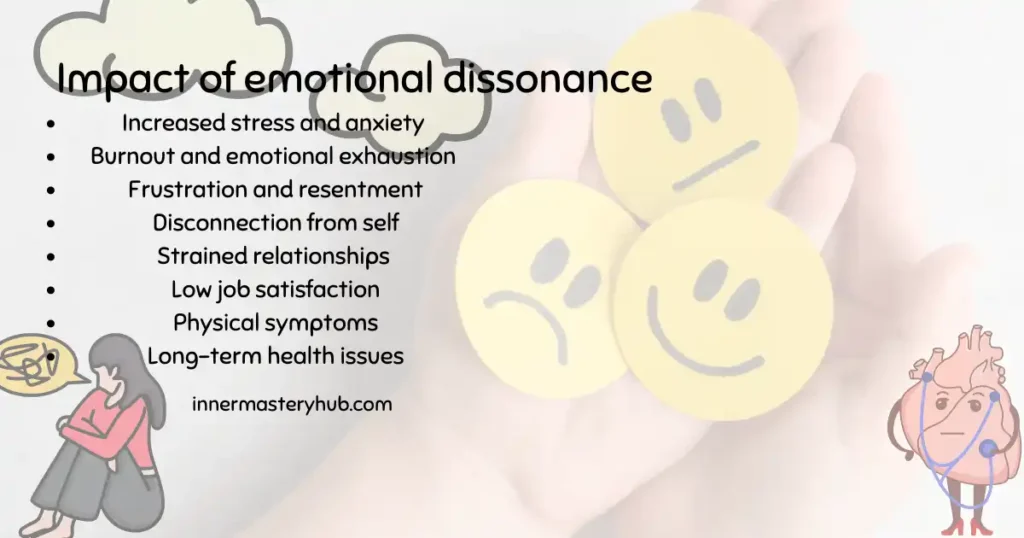Behavior Chain Analysis: A Powerful Tool for Changing Behavior

Have you ever questioned your motivations? Why do you put off doing crucial tasks? Why do you overindulge when you’re under stress? Why do you occasionally become angry?
One method for understanding the elements that influence your behavior is behavior chain analysis. Finding the antecedents, behaviors, and consequences (ABCs) of your behavior chains will help you figure out what’s causing your troublesome behaviors and take appropriate action.
Behavior chain analysis is a potent method for behavior study and modification. It can be applied to a variety of issues, including managing aggression, substance misuse, overeating, and procrastination.
Table of Contents
Breaking your Behavior
By analyzing and examining human actions, reactions, or habits, “breaking your behavior” means better understanding the underlying factors, motivations, and causes that underpin specific behaviors. Complicated behaviors are fragmented into smaller, easier-to-manage parts to assess the sequence of events, triggers, repercussions, and psychological or environmental factors.
It is easier to comprehend and modify behavior when it is broken down into its antecedents, behaviors, and consequences (ABCs).
- Events or stimuli that take place before to a behavior are known as antecedents. Thinks, feelings and bodily sensations are examples of internal ones; people, places, objects, and activities are examples of external ones.
- The visible acts that a person performs are called behaviors.
- Following a behavior, there are events or stimuli known as consequences. Praise, attention, and obtaining what you desire are examples of good ones; punishment, criticism, and getting into trouble are examples of negative ones.
- Knowing the ABCs of behavior will help you comprehend why a behavior occurs and how to modify it.
Once you have identified the ABCs of behavior, you can understand why the behavior is happening and how to change it.
For instance, a child’s temper or hunger may be the antecedent to their tantrums when they don’t get their way (behavior). To halt the tantrum, the parent may give them what they want as a result.
By addressing the antecedent (e.g., making sure the child is rested and refreshed, ignoring the tantrum, and only giving them what they want when they are quiet), you can alter the behavior.
Here is an example of how to break down a behavior into ABCs:
Antecedent: A child sits in class and the teacher talks.
Behavior: The child starts to fidget and talk to the child next to them.
Consequence: The teacher looks at the child and frowns.
In this example, the antecedent is that the child sits in class, and the teacher talks. The behavior is that the child starts to fidget and talk to the child next to them. The consequence is that the teacher looks at the child and frowns.
To help the child stop chatting and squirming in class, the parent may try to address either the antecedent (ensuring the child has had adequate attention before school) or the consequence (talking to the teacher about constructive ways to refocus the child’s attention).
RELATED: 10 Stages of Grief: Strategies for Coping and Healing
How to do a Behavior Chain Analysis
Cognitive-behavioral therapy (CBT) uses Behavior Chain Analysis (BCA) as a therapeutic tool to identify and treat problematic habits. This is a detailed guide on how to perform a BCA:
To do a behavior chain analysis, follow these steps:
- Identify the target behavior. What is the specific behavior that you want to understand or change?
- Identify the antecedents. What are the events or stimuli that happen before the target behavior?
- Identify the behavior. What is the observable action that you are trying to understand or change?
- Identify the consequences. What are the events or stimuli that happen after the target behavior?
Once you have identified the ABCs of the target behavior, you can understand why the behavior is happening and how to change it.
Here is an example of a behavior chain analysis:
Target behavior: Overeating
Antecedents: Feeling stressed, feeling bored, seeing food
Behavior: Eating unhealthy foods, eating more food than necessary
Consequences: Feeling guilty, feeling physically uncomfortable
Stress, boredom, or the sight of food could be the antecedent of overeating in this case. Eating unhealthy meals or more food than is necessary is the behavior. Feelings of guilt or physical discomfort are the results.
Attempting to address the antecedents (e.g., find healthy ways to cope with stress, find activities to do when you’re bored, avoid situations where you’re likely to be tempted by unhealthy foods) or consequences (e.g., practice self-compassion, find ways to soothe yourself without food) of overeating may help you change the behavior.
Here are some tips for doing a behavior chain analysis:
- Be specific when identifying the target behavior, antecedents, and consequences.
- Try to identify all of the possible antecedents and consequences.
- Keep a journal to track the ABCs of the target behavior over time.
- Once you have identified the ABCs of the target behavior, you can start to develop strategies for changing it.
Behavior chain analysis can be a helpful tool for understanding and changing various behaviors, including procrastination, overeating substance abuse, and anger management. If you are struggling to change a particular behavior, try doing a behavior chain analysis to identify the factors that contribute to it.
When to Do a Behavior Chain Analysis
- When addressing recurring problematic behaviors
- After experiencing a significant emotional or behavioral incident
- To gain insight into the causes of addictive behaviors
- When seeking to understand and change self-destructive habits
- In the context of cognitive-behavioral therapy (CBT) sessions
- To examine the triggers and consequences of specific behaviors
- When working on personal development and self-awareness
- To explore the dynamics of interpersonal conflicts and communication issues
- As part of a therapeutic process to improve mental health and well-being
- When dealing with impulsive or compulsive behaviors
- To identify and modify behavior patterns that hinder personal goals
- In situations where understanding the root causes of behavior is crucial for change
Subscribe to our newsletter!
What is the difference Between a Behavior Chain Analysis and a Task Analysis?
Behavior Chain Analysis (BCA) and Task Analysis are critical in psychology and therapy, but they serve different purposes and focus on distinct aspects of behavior. Here’s the crucial difference between the two:
Behavior Chain Analysis (BCA)
- Purpose: BCA primarily analyzes clinical or undesirable behaviors. It aims to uncover the triggers, thoughts, actions, and consequences contributing to behavior.
- Focus: BCA focuses on a single behavior or a specific sequence of events leading to and following that behavior.
- Application: In order to address and change harmful behaviors, cognitive-behavioral therapy (CBT) and other therapeutic approaches frequently employ it.
- Goal: To acquire knowledge about the reasons behind behavior and create plans for modifying and improving it.
Task Analysis:
Goal: Task analysis divides difficult abilities or assignments into more doable chunks. Occupational therapy, training, and education all frequently use it.
Focus: The stages or actions necessary to complete a particular task or skill are the main focus of task analysis.
Application: It is frequently used to teach skills in educational settings, to help people learn job-related abilities in vocational training, and to help people with everyday living chores in occupational therapy.
Outcome: Task analysis seeks to simplify the teaching or learning of complex abilities by offering a clear, step-by-step knowledge of completing a task.
Example of Task Analysis
Here’s an example of a Task Analysis for a common task: Making a Peanut Butter and Jelly Sandwich, broken down into steps:
Task: Making a Peanut Butter and Jelly Sandwich
- Gather Supplies:
- Take two bread slices out of the bread bag.
- Obtain two jars: one for peanut butter and the other for jam or jelly.
- Locate a spreading or butter knife.
- Optional: Get a plate to place the sandwich on.
- Lay Out the Bread:
- Place the two slices of bread on a clean surface, such as a plate or a clean countertop.
- Open the Peanut Butter and Jelly Jars:
- Unscrew the lids of the peanut butter and jelly jars and set them aside.
- Spread Peanut Butter:
- Scoop a desired amount of peanut butter from the jar using the knife.
- Spread the peanut butter evenly onto one slice of bread. Be gentle to avoid tearing the bread.
- Spread Jelly or Jam:
- Scoop out a desired amount of jelly or jam from the jar using a different section of the knife (to prevent mixing with peanut butter).
- Spread the jelly or jam evenly onto the other slice of bread.
- Combine the Slices:
- Carefully place the slice with peanut butter on top of the slice with jelly or jam, creating a sandwich.
- Optional: Cut the Sandwich:
- Use a knife to cut the sandwich diagonally or into smaller pieces if desired.
- Serve and Enjoy:
- Place the sandwich on a plate if not done earlier.
- Serve the sandwich and enjoy!
- Clean Up:
- Close the lids of the peanut butter and jelly jars and put them back in their respective places.
- Wipe any spilled ingredients or crumbs from the counter or plate.
- Rinse the knife and any utensils used.
- Put away the bread, knife, and other supplies.
This Task Analysis breaks down the process of making a peanut butter and jelly sandwich into sequential steps, making it easier for someone to follow and complete the task accurately. Task Analyses are helpful tools for teaching and learning complex tasks, ensuring that each step is clear and organized.
RELATED: 6 Ways to Live Life Without Regrets
How to Manage Difficult Behaviors
There are several ways to manage difficult behaviors in children and adults. Some of the most effective methods include:
- Managing challenging behaviors in both adults and children can be done in a variety of ways. Some of the best techniques are as follows:
- encouraging feedback. Praise, attention, or other desired results are used to reward positive behavior. Increasing the possibility that favorable conduct will recur in the future can be achieved through positive reinforcement.
- disregarding. When it comes to minor attention-seeking habits, this can be a useful tactic. If the conduct is ignored, it conveys the message that the youngster will not receive the attention they desire.
- Pause. This entails taking the child out of the circumstance for a brief time. A youngster may benefit from a time-out if they need to relax and regain behavioral control.
- repercussions that come naturally.This entails giving the child the opportunity to see the inevitable results of their actions. For instance, a child will probably get cold if they refuse to put on their coat before going outside. Children who experience natural consequences are more likely to learn from their mistakes and make wiser decisions in the future.
- Talking.It is crucial to discuss your child’s behavior with them. Tell them what conduct is appropriate and inappropriate, along with the reasons behind it. Maintain consistency in the penalties and expectations you set.
Importance of Behavior Chain Analysis
Behavior Chain Analysis’s ability to help understand the intricate web of human behaviors makes it a crucial tool in psychology and therapy. Through the breakdown and analysis of the events preceding and following a specific activity, provide valuable insights into the reasons, thoughts, emotions, and results that underlie actions.
This information is crucial for identifying the root reasons of problematic behaviors, whether they are brought on by issues with addiction, mental health, interpersonal connections, or personal growth. Together, individuals and therapists can identify these causes and establish tailored strategies and interventions to promote healthy growth.
Ultimately, Behaviour Chain Analysis encourages people to take charge of their actions, make wise decisions, and strive for healthier and more satisfying lives, highlighting its effectiveness.
The Components of a Behavior Chain Analysis
These components typically include:
- Behavior: This is the focal point of the analysis—the specific behavior you are trying to understand or modify. It could be a problematic, undesirable behavior or one you want to promote.
- Antecedents/Triggers: Antecedents are the events or situations that precede and trigger the behavior. Internal (thoughts, emotions, physical sensations) or external (environmental cues, social interactions) factors influence the behavior.
- Thoughts and Beliefs: This component explores the thoughts, beliefs, and self-talk accompanying the behavior. Understanding what goes through the individual’s mind before, during, and after the behavior is essential.
- Emotions and Feelings: Emotions play a significant role in behavior. Identify the emotional states that are associated with the behavior. Understanding how emotions influence actions is crucial.
- Behavior Itself: This part of the analysis delves into the behavior in detail, examining its frequency, duration, and intensity. It also considers any variations or patterns in the behavior.
- Consequences: Consequences encompass the outcomes or results that follow the behavior. They can be immediate (e.g., relief, reward, punishment) or long-term (e.g., impact on relationships, well-being).
- Secondary Gain: Secondary gain refers to any hidden benefits or rewards associated with the behavior, even if it appears problematic. Identifying secondary gains can shed light on why the behavior persists.
- Alternative Behaviors: Explore alternative behaviors that could replace or modify the problematic behavior. These alternatives should be healthier and more adaptive ways of achieving the same goals or meeting the same needs.
- Environment and Context: Consider the physical and social environment in which the behavior occurs. Environmental factors, such as time of day or specific locations, can influence behavior.
- Support Systems: Assess the presence of support systems, such as family, friends, or professionals, and how they may be contributing to or mitigating the behavior.
- Coping Strategies: Identify the coping strategies currently used by the individual to deal with triggers and emotions. Evaluate the effectiveness of these strategies and whether they need adjustment.
- Long-Term Goals: Understand the individual’s long-term goals and how the behavior aligns with or conflicts with those goals. This component can motivate change.
Benefits of Behavior Chain Analysis
Here are 4 benefits of behavior chain analysis:
- A greater awareness of oneself. By dissecting a behavior into its component elements, behavior chain analysis can assist people in comprehending their actions. This can assist in detecting trends, triggers, and underlying motives.
- enhanced capacity for solving problems. People are better able to resolve harmful habits once they have a greater understanding of their own conduct. Behavior chain analysis can be used to create customized interventions and find possible intervention spots.
- empowerment. People who use behavior chain analysis may feel more in charge of their actions. People are better able to respond when they are aware of the elements influencing their conduct.
- improved connections.People’s connections with their loved ones can be improved through behavior chain analysis. Those close to the person can be more understanding and supportive if they are aware of their behavior. Behavior chain analysis can also be utilized to create engagement and communication plans that can strengthen bonds between people.
Behavior chain analysis is a powerful tool that can be used to improve various areas of life. It is a valuable tool for individuals, therapists, and other professionals.
FAQS
How to Do a Chain Analysis
To perform a Chain Analysis, examine a specific behavior by identifying triggers (internal and external factors), thoughts, emotions, behavior, and consequences. Analyze patterns, recognize secondary gains, and explore alternative behaviors. Use this insight to develop strategies for behavior modification and improvement.
How to use a chain analysis to break unhealthy habits
Use Chain Analysis to break unhealthy habits by identifying triggers, thoughts, and emotions linked to the practice. Recognize the immediate and long-term consequences. Find alternative behaviors to fulfill the exact needs and create a plan to replace the practice with healthier choices. Consistency, self-awareness, and support are key to success.
Why Conduct Chain Link Analyses?
Conduct Chain Link Analyses to understand the root causes of behaviors, identify triggers, and explore thought patterns and consequences. This structured approach aids in behavior modification, self-awareness, and problem-solving, making it valuable for personal growth and therapeutic progress.
What are DBT skills?
DBT (Dialectical Behavior Therapy) skills encompass four key areas: mindfulness for awareness and presence, emotion regulation for managing feelings, interpersonal effectiveness for healthy relationships, and distress tolerance for handling crises. These skills assist individuals in coping with intense emotions and improving their emotional well-being and relationships.
What is behavioral chain analysis?
Behavioral Chain Analysis is a therapeutic process used to dissect and understand complex behaviors. It involves identifying triggers, thoughts, emotions, and consequences associated with a specific behavior. This analysis aids in uncovering root causes, patterns, and motivators, enabling individuals to develop behavior modification and improvement strategies.






